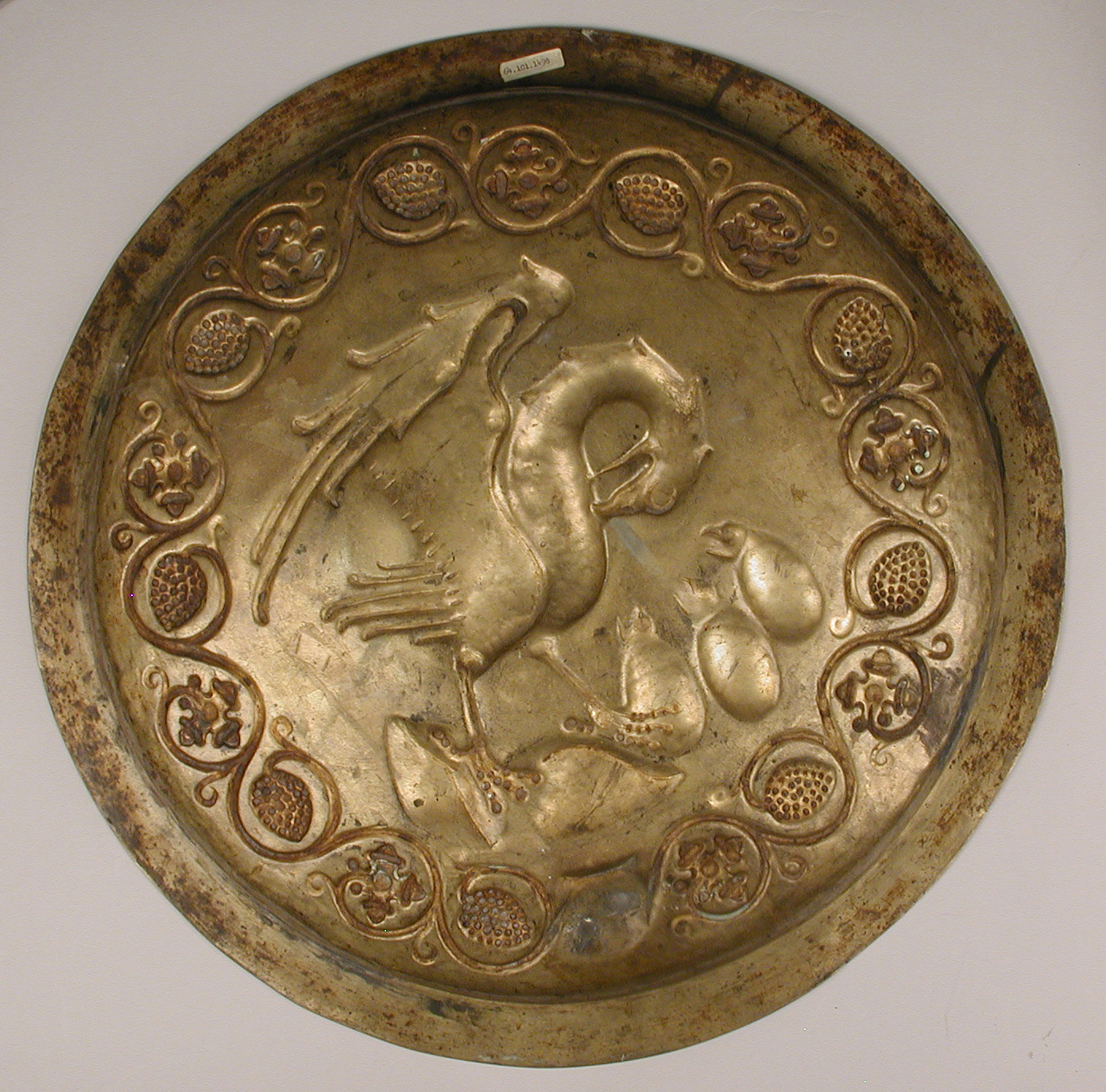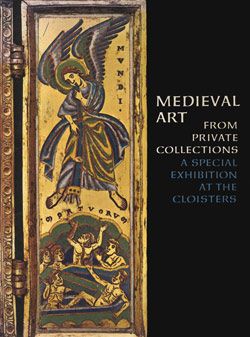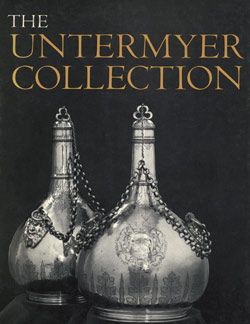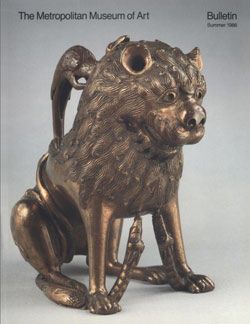Plate with Pelican in her Piety
The motif of the pelican piercing its breast to feed its young with its blood became a popular symbol of the sacrifice of Christ during the late medieval and early Renaissance period. Represented in the middle of this plate with three of its young, the elegantly formed bird directs its beak toward its own breast in a charitable gesture of self-sacrifice. The design of this plate was executed through the traditional, painstaking method of brass beating. Certain motifs, like the pelican here, were repeated almost without variation for more efficient production, though the encircling motifs often varied from plate to plate, becoming more complex in many of the late fifteenth-century examples. Here, the central motif is surrounded by a circular design of grapes, intertwined with tendrils and vines. Many such plates were produced in Dinant, a French-speaking town in the Low Countries, which was the center of a flourishing metalworking trade. The city's importance is reflected in the generic term dinanderie, which has come to be associated with metalwork of this sort. Decorative plates were proudly displayed on sideboards, served as chargers on which food was brought to the table, and sometimes used in the liturgy. The imagery of this plate-the combination of the pelican and the grapes, in particular-suggests it had religious, and possibly Eucharistic, associations. Though such plates were highly popular, the appeal of mass production eventually led to a decline in quality, and by the sixteenth century this method was replaced by the easier process of casting.
This image cannot be enlarged, viewed at full screen, or downloaded.
This artwork is meant to be viewed from right to left. Scroll left to view more.







